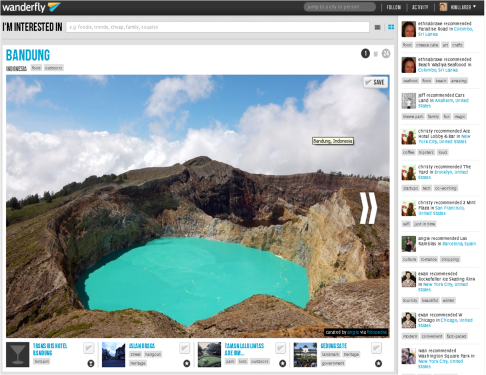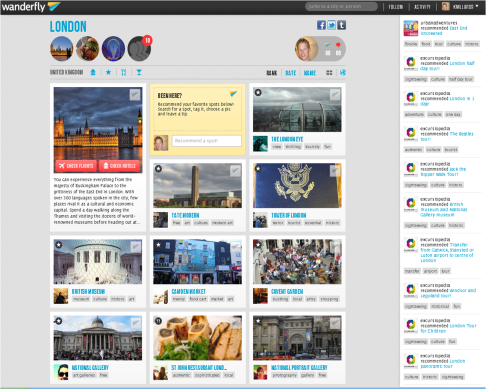From one social media site we weren’t too hot on to one we instantly fell in love with. Here at Limelight we have recently discovered Wanderfly and if like me, you love to travel it will be an instant hit. A cross between Pinterest and Trip Advisor, it is quickly becoming the best place to search and share personalised travel recommendations. Featuring amazing snap shots of destinations to cater to all tastes, it’s a visual delight for any travel enthusiast.
Launched in 2010, Wanderfly has gone from strength to strength. Most impressively it’s flipping tradition travel searching on its head with over 5 million trip recommendations covering thousands of cities and destinations as well as partnerships with a number a brands including Mint.com, History channel, Havaianas and Jeep.
Wanderfly aims to streamline the “Where should I go?” process of searching and booking holidays and trips. Unlike traditional holiday search sites Wanderfly offer users visual recommendations on places they would like to go based on their interests, be it culture, food, or adventure and then matches destinations to users budget and length of trip.
It works like a social media mash up between Pinterest and Facebook. Users create boards for cities or destinations they have been to or are interested in visiting. They can then make recommendations for restaurants, hotels and attractions.
In addition to user-specific city boards, there are also category city boards that collect recommendations for a given city from all users. Their content is based on factors such as what you like (via tags), who you’re following and what’s most popular.
Finally to keep you up to date on activities, new content from your followers can be seen down a feed on the right hand side.
The only down side is that it is still US orientated with trips and destinations recommended from a US perspective not a UK or European. Hopefully the site will soon have a UK platform?
The internet has revolutionised global travel, with destinations, as well as reviews and recommendations only a click away. While over the past few years we have seen an explosion of user generated travel sites from WAYN to Trip Advisor to Expedia to Trippy to this really is the age of DIY travel.
To check out our best recommendations and see some of our best travel stories follow us on Wanderfly here, Limelight, as well as some of the Limelight Travel lovies, you can follow both myself and Ethna.
You’ll also find us on Twitter, and on Pinterest
Keith Millar





